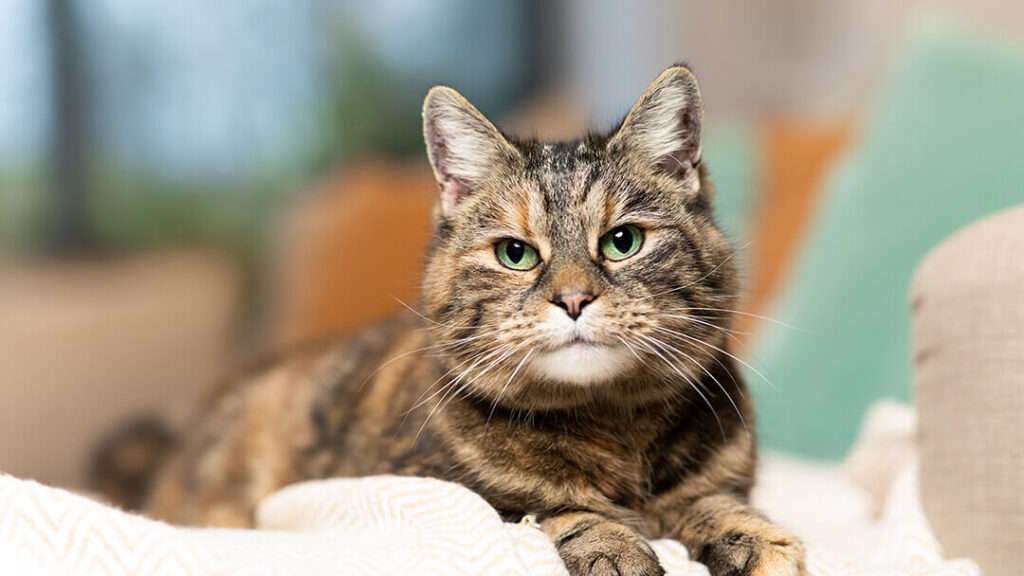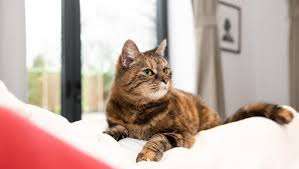Tortoiseshell cats, often loved as “torties,” are among the most eye-catching and spirited felines. Their coats are a striking mix of black, brown, amber, and orange, which makes them easily recognizable and highly cherished. While they are not a specific breed, the name “tortoiseshell” comes from their unique pattern, which can be found in various cat breeds, both long-haired and short-haired.
Learn more about: IAMS cat food review
This guide covers the history, appearance, behavior, and care needs of these special cats, along with some interesting facts.

History and Origin
Tortoiseshell cats have been around for a long time, with references to their mottled coat appearing in ancient stories and artwork.
In many cultures, they were thought to bring good luck and protection from bad influences. Although they don’t come from a single place, their coat pattern is a natural result of specific genetic combinations, meaning they can be found in many parts of the world and across different breeds.
Coat Patterns and Colors
A hallmark trait of tortoiseshell cats is their uniquely patterned coat. The coat consists of two main colors, usually black and red, in different shades, creating a marbled or swirling effect. Some patterns are more patchy, while others blend colors in a brindled or mosaic-like style.
Common variations include:
- Classic tortoiseshell: A mix of dark and warm colors without much white.
- Dilute tortoiseshell: Softer shades like blue-gray and cream instead of black and orange.
- Tortoiseshell with tabby: Sometimes called “torbie,” this combines tortoiseshell colors with visible tabby markings.
Each tortoiseshell cat has a unique coat pattern, making them as one-of-a-kind as fingerprints.
The Genetics Behind the Coat
The coat of a tortoiseshell cat is determined by genetics linked to the X chromosome.
The genes for both orange and black fur are located on the X chromosome, meaning a cat must have two X chromosomes to display both colors. That’s why almost all tortoiseshells are female. Male tortoiseshells, which are very rare, usually have an extra X chromosome (XXY), a condition known as Klinefelter syndrome. These males are often sterile and are sometimes considered lucky due to their rarity.
Personality and Temperament
Many people think that tortoiseshell cats have a special and lively personality, often called “tortitude.” Although each cat has its personality, tortoiseshells are frequently characterized as:
- Energetic: They enjoy playing and engaging in mental activities.
- Strong-willed: They often show independence and a mind of their own.
- Affectionate: Many form strong bonds with their owners.
- Vocal: Some can be quite talkative.
Although there’s no scientific proof that coat color affects personality, many cat lovers believe that torties often make a lasting impression.
Breeds That Can Have Tortoiseshell Cats
Since “tortoiseshell” refers to a coat pattern, not a breed, it can be found in many different types of cats.
Examples include:
- American Shorthair
- British Shorthair
- Maine Coon
- Persian
- Oriental Shorthair
- Ragdoll
- Scottish Fold
Each of these breeds has its characteristics, but the tortoiseshell pattern adds a unique beauty to them.
Caring for a Tortoiseshell Cat
Taking care of a tortoiseshell cat is much like taking care of any other cat, though their specific breed may affect grooming needs.
Here are some tips for their care:
Diet and Nutrition
Feeding them a balanced diet rich in protein is important for their overall health and a shiny coat. Whether you choose wet, dry, or a combination, make sure it meets AAFCO standards for feline nutrition.
Grooming
Short-haired tortoiseshells only need occasional grooming, while long-haired ones benefit from regular brushing to keep their fur tangle-free.
A soft-bristled brush or a grooming glove can help with shedding and reducing hairballs.
Health Care
Regular visits to the vet, vaccinations, and parasite prevention are important. Since tortoiseshells can be part of many different breeds, their health depends more on breed-specific factors than the coat pattern itself.
Mental and Physical Stimulation
Tortoiseshells typically thrive when both their minds and bodies are stimulated. Interactive toys, climbing trees, and puzzle feeders can keep them entertained and happy.
Lifespan and Health
Tortoiseshell cats usually live between 12 and 16 years, depending on their genetics, diet, and overall care. They typically do not have health problems directly linked to their coat. However, male tortoiseshells with XXY chromosomes might face some health issues, such as infertility and possible metabolic problems.
Myths and Cultural Beliefs
Around the world, tortoiseshell cats have been the subject of many myths and cultural beliefs.
- Good luck charms: In Japan and the U.S., they are believed to bring good fortune.
- Ship guardians: Sailors historically brought tortoiseshell cats on board, believing they would safeguard the ship from storms.
- Symbol of prosperity: In some cultures, owning a tortoiseshell cat was thought to bring wealth.
While many of these beliefs are just folklore, they contribute to the charm and mystery of tortoiseshell cats.
Adopting a Tortoiseshell Cat
Tortoiseshell cats are available through animal shelters, rescue organizations, and breeders when the pattern occurs in certain breeds.
Adopting from a shelter provides a cat with a loving home and allows you to meet different personalities before choosing the right one.
When meeting potential adoptees:
- Spend time engaging with them to understand their personality.
- Ask about their medical history and vaccinations.
- Consider their age and energy level to match your lifestyle.
Fun Facts About Tortoiseshell Cats
Each tortoiseshell cat has a distinct coat pattern, making them as unique as human fingerprints.
- In folklore, they were sometimes called “money cats” for their association with luck.
- The term “tortoiseshell” comes from the resemblance of their coat to the shell of a tortoise.
- Dilute tortoiseshell cats have softer, pastel-like coats that are just as wonderful to look at.
- A male tortoiseshell cat once gained fame for surviving several shipwrecks!
Living with a Tortoiseshell Cat
Life with a Tortoiseshell Cat can be endlessly entertaining. They may surprise their humans with bursts of playfulness one moment and curl up for cuddles the next. Patience, understanding, and regular interaction help foster a strong bond. If adopting one, be prepared for a lively companion with a coat that turns heads and a personality that wins hearts.
FAQs About Tortoiseshell Cats
No, the term describes a coat pattern, not a breed. Tortoiseshell coloring can appear in many breeds.
Ship guardians – Sailors historically brought tortoiseshell cats on board, believing they would safeguard the ship from storms. Since females have two X chromosomes, they can inherit both orange and black coloring, creating the tortoiseshell pattern.
The majority of male tortoiseshell cats cannot reproduce because of an additional X chromosome (XXY), but occasional exceptions do happen.
Many owners say they have a feisty, affectionate nature nicknamed “tortitude,” though this is not scientifically proven.
With proper care, they can live 12–16 years or longer, depending on the breed, diet, and overall health.


Pingback: Bombay Cat: Traits, Care, Personality & Breed Guide -